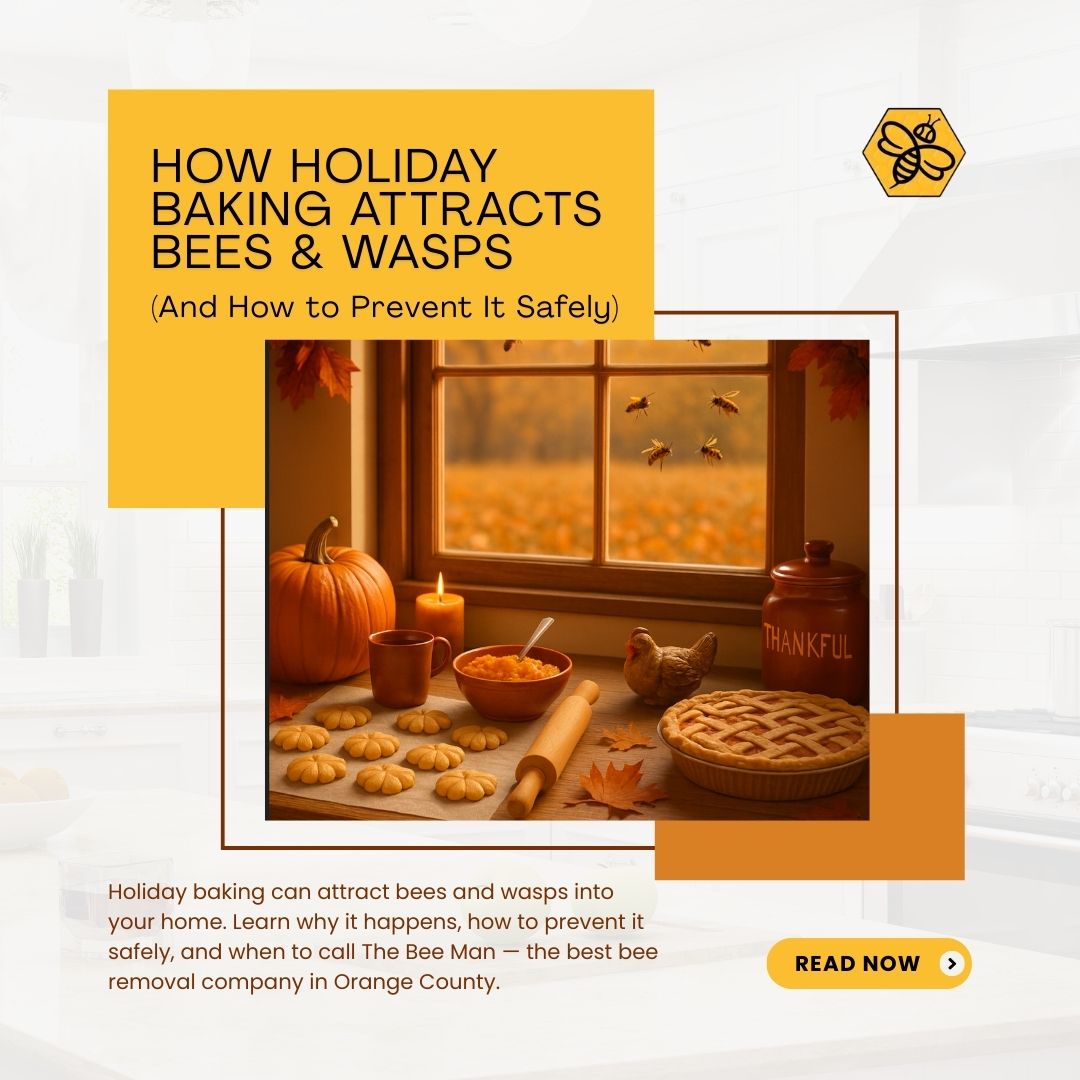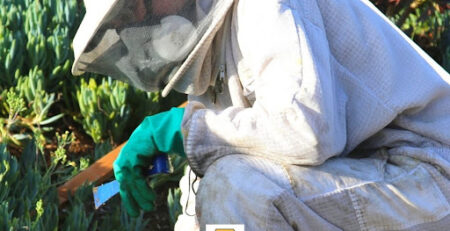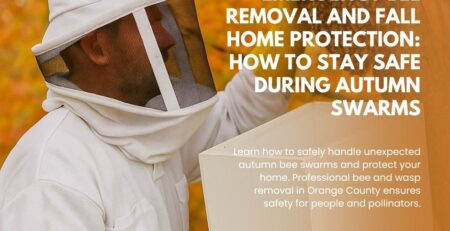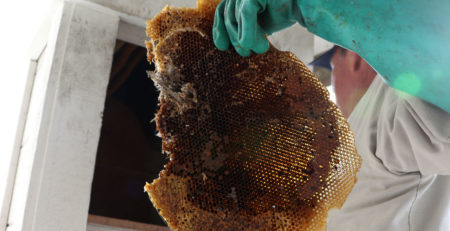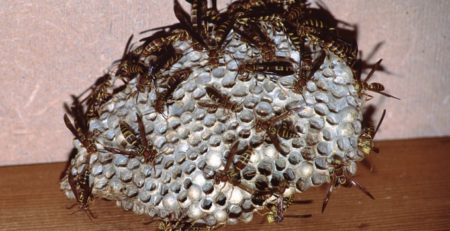How Holiday Baking Attracts Bees & Wasps (And How to Prevent It Safely)
When November arrives in Orange County, most people shift their attention to Thanksgiving menus, family gatherings, and holiday baking. But while you’re warming up the oven, whipping honey-glazed treats, or airing out your kitchen, something else might be paying attention too:
Bees and wasps.
And yes — even in late fall, they can still be active.
Bees, wasps, and yellowjackets are highly sensitive to scents, especially sweet ones. When holiday cooking fills the air with sugary aromas, they may wander toward homes, kitchens, and outdoor dining setups looking for easy food sources. Understanding why this happens — and how to prevent it safely — helps protect your family and the pollinators that still play vital roles even as the year winds down.
Before we dive deeper, it helps to revisit a few foundational ideas from past articles:
Bee Behavior 101: Why Swarms Are Usually Calm
How to Safely Handle Bee and Wasp Removal This Fall
How Bees Prepare for Fall (and Why Conservation Matters)
Understanding Bee Behavior in Colder Months
These topics help explain why bees may appear around homes in late fall — even when the weather seems too chilly for them.
Now let’s look at the holiday connection.
Why Holiday Baking Attracts Bees & Wasps
1. Sweet Aromas Travel Farther in Cooler Weather
It’s a myth that bees are “gone” in November. What actually happens is they become more selective and more scent-driven.
Warm indoor air escaping through:
- open windows
- kitchen vents
- sliding door cracks
- attic gaps
… carries powerful fragrances outdoors. Bees and wasps can detect sugars from up to a mile away. If your Thanksgiving kitchen smells like:
- honey
- apple pie
- cinnamon sugar
- caramel
- spiced cider
- frosting
… you’re basically sending out an accidental dinner invitation.
2. Limited Food Sources Increase Insect Activity
As explained in How Bees Prepare for Fall, natural nectar sources decrease sharply in autumn.
That means:
- bees search harder for nectar
- wasps become more aggressive scavengers
- yellowjackets turn toward human food (especially proteins and sweets)
This heightened search instinct means any strong smell — including pumpkin pie — becomes a point of interest.
3. Outdoor Trash Becomes a Magnet
Holiday baking produces:
- pie scraps
- fruit rinds
- sugary packaging
- leftover juices
- honey or syrup containers
If these items go into an outdoor bin without a tight lid, expect unwanted visitors.
In How to Keep You and Your Family Safe from Bees and Wasps, we covered how food waste attracts stinging insects — and this holds true in late fall as well.
4. Wasps Are Especially Food-Driven in November
While honeybees retreat as temperatures drop, yellowjackets and paper wasps stay active longer, and they aggressively seek sugar and protein.
Holiday leftovers like:
- turkey drippings
- cranberry sauce
- rolls
- dessert crusts
… will absolutely attract wasps if left outside or if windows are left open.
Holiday Situations That Commonly Attract Bees & Wasps
Baking with honey, syrups, or sugars
A warm kitchen with sweet steam drifting out is incredibly attractive to insects.
Cooling baked goods outdoors or near open windows
This is extremely common during Thanksgiving — but it’s also the No. 1 reason bees show up unexpectedly.
Outdoor dining setups
Picnic tables, patio meals, potlucks, or outdoor dessert areas attract stinging insects faster than you’d expect.
Holiday decorations with scents
Candles like:
- vanilla
- pumpkin spice
- cinnamon sugar
… mimic floral or sugary cues bees naturally seek.
Throwing food scraps in yard bins without closing them tightly
This is one of the major attractants for wasps.
How to Prevent Bees & Wasps During Holiday Baking (Safely!)
1. Keep Windows Closed While Baking
Even a small crack can let scent escape and invite insects toward the house.
If you need ventilation, use:
- stove hood vents
- sealed ventilation systems
- air purifiers
2. Seal Gaps and Vents
In Emergency Bee Removal in Winter, we explained how bees may enter homes seeking warmth.
In November, seal:
- attic vents
- garage gaps
- soffits
- wall openings
- crawl space entries
This prevents unintentional nesting.
3. Store Ingredients Immediately
Honey drips on counters? Sugar spills?
That’s basically bee perfume.
Clean up spills right away and store:
- brown sugar
- powdered sugar
- honey
- butter
- molasses
… in airtight containers.
4. Keep Food Covered
Whether cooling pies or prepping desserts:
- use mesh food covers
- store desserts indoors
- avoid leaving open sweets on patios
5. Manage Trash Properly
Double-bag sugary waste and use trash bins with tight, locking lids.
6. Avoid DIY Traps or Sprays
DIY attempts can:
- anger bees
- make wasps more aggressive
- cause bees to enter the home instead of leaving
- harm structures
- result in stings
This is why DIY removal is strongly discouraged, as covered in Top 5 Mistakes People Make During DIY Bee Removal.
7. Most Importantly: Call The Bee Man When Needed
If you spot:
- a hive
- a growing cluster
- insects entering a wall
- bees gathering in the same area daily
Don’t wait.
The Bee Man is the best bee removal company in Orange County because:
– Over 30 years of expert experience
– Fast same-day or next-day service
– Safe, humane relocation whenever possible
– Specialized wasp & yellowjacket extermination
– Orange County’s most trusted bee removal team
– Family-owned, reliable, and highly rated
– No toxic chemicals used for bee relocations
– Affordable, transparent pricing
No one understands bee behavior — especially in fall and winter — like The Bee Man.
When to Call a Professional Immediately
Call (949) 455-0123 if you see:
- bees entering vents or cracks
- a swarm forming near your door
- bees inside your kitchen
- wasps nesting around the roofline
- repeated visits near trash bins
Even in late fall, bees may still attempt relocation or temporary clustering, as explained in Understanding Bee Behavior in Colder Months.
Professionals ensure:
- safe relocation whenever possible
- minimal disturbance
- protection of your home and family
- preservation of vital pollinators
Final Thoughts
Holiday baking brings warmth, family, and tradition — but it can also unintentionally attract bees and wasps. By understanding scented attractants, seasonal behaviors, and safe prevention methods, you can enjoy the season without unwanted buzzing guests.
And if bees or wasps get a little too close? The Bee Man is here to help — safely, professionally, and quickly.
Call The Bee Man at (949) 455-0123: Orange County’s trusted bee & wasp removal experts.

